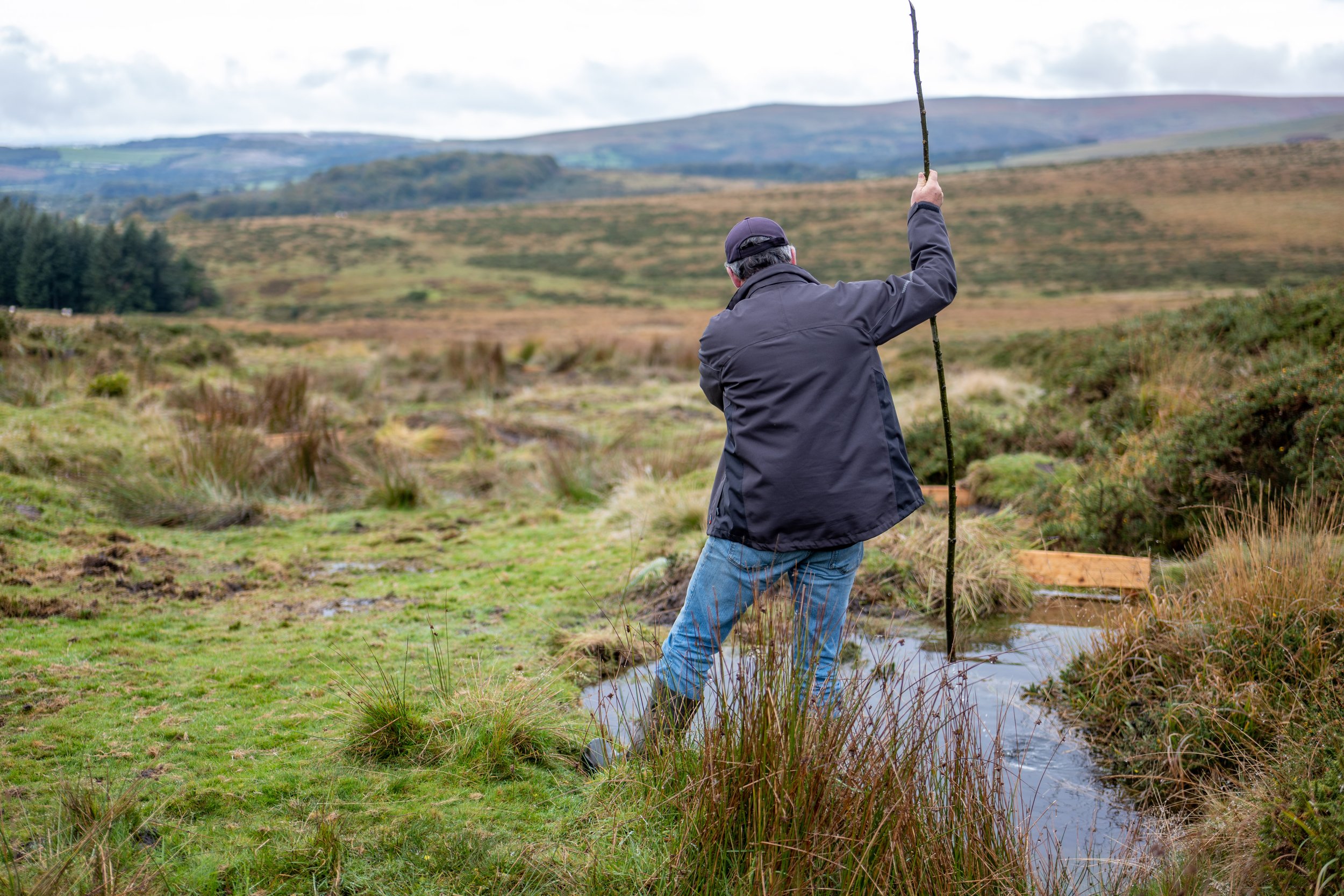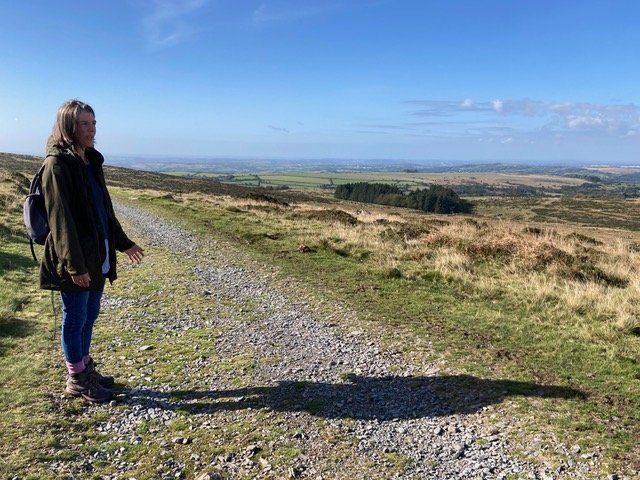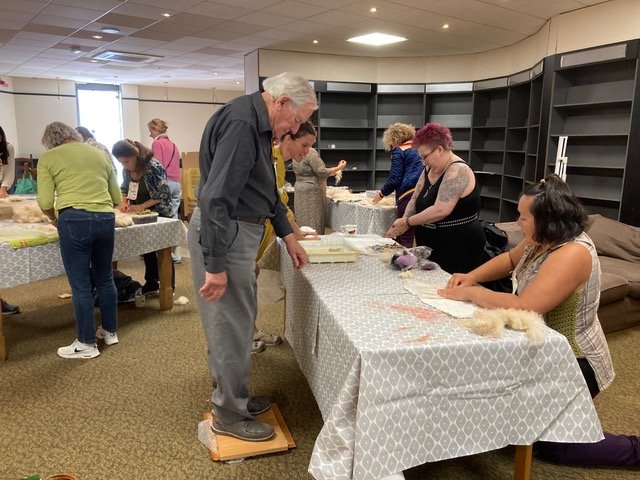How to Bury the Giant In Harford Moor
Our first event for How to Bury the Giant has been in Harford Moor. We hoped for new dialogue and creative investment. We wanted the energy in the moor to speak to everybody present and we thought that we might deliver some tangible restoration and celebrate.
In this first event we were really lucky to be with the owner, John Howell, the farmer David Sadler and the restoration contractor, Andy Coleman. All of whom stimulated questions and new understanding about the carbon rich landscape and the energy flows through the moor and how the moor is managed and looked after for future generations.
We’re working with Tamsin Thomas, Upland Commons Project Officer from the Foundation for Common Land and other partners like Plymouth Energy Community (PEC) and Devon Environment Foundation to try out a new way to encourage folk to help restore and celebrate the moor and get to know it better together. This event is part of a Lottery funded £3 million project, Our Upland Commons, helping to secure the future of upland commons in England.
Andy Coleman showing us how deep the water has become with the new ‘dams’. (Photo Jim Wileman)
Harford Moor, is a wild and beautiful part of Dartmoor above Ivybridge and is well known for its archaeology, bronze age settlements, and its wet peatland mire at Hangershell rock. From the top you can see for miles over the Plymouth Sound to the west, and across South Hams to the East. The connectivity between urban communities and the moor is striking, not just for food, and flood prevention, but for healthy carbon rich landscapes, and for recreation.
Tamsin on top of the moor.
In Plymouth, making felt with Harford Moor fleece before the trip.
PEC have a group of volunteers (PALS) that are creative with energy and starting to take action. We told them a story of the Carbon Giant, immersed in mosses, drew them, grew some in a jam jar, researched the possibilities of wool fleeces, played with it as felt, insulation and draught excluders, discovered how the upland commons are managed.
On our walk we discovered more about the sphagnum mosses that grow lush down by the brook, and yet are struggling to hold the peat down at the top by the mire, where the peat is drying and draining too fast, people and animals are wearing it away. We learnt about the mosaic of nature holding the carbon underground and at the same time providing livelihoods for those that work in it. We enjoyed hearing about management of the cows for milk and meat and the energy of that, the realism of food production.
At the moor, and through all weathers, the group really enjoyed our experience from the city to the wet and blustery mire. We expressed the deep respect we have of the mosses growing on the moor, their strength and courage, their creative resilience and smallness, their photosynthetic abilities to trap the suns energy and send the carbon underground. We reflected the moss’s story and the hopeful benefit of replicating their actions where we live. One of the participants had been stirred by moss to write a poem. She asked to read it, the mosses were listening.
Chloe Uden encouraging us to think and take note of the mosses in the moor.
We travelled across the gorse and coarse grasses at the bottom of the moor to the ceremonial planting of sphagnum in their felt cups and burial of the felt ‘giant’ blanket at the top. The sphagnum had originated in Harford and had slowly grown through the summer in experimental cups and trays, watered by rainwater. The blanket was created from pieces of Harford moor felt made by PEC PALS, sutured together with rushes and Dartmoor wool.
We returned, our feet thudding on the soft path, with our own reflections and experience of something beginning to change, growing, tiny actions holding the carbon down and in.
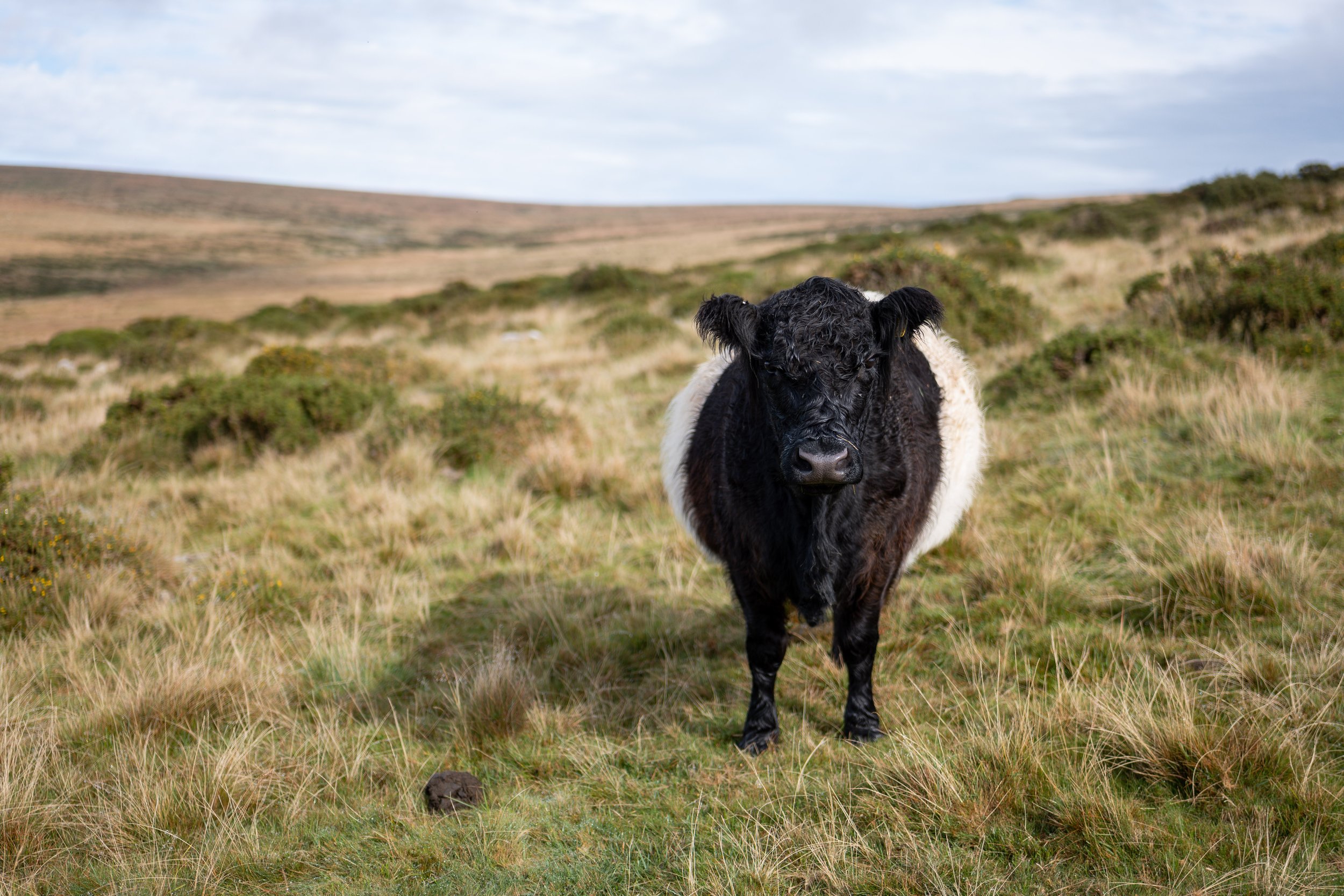

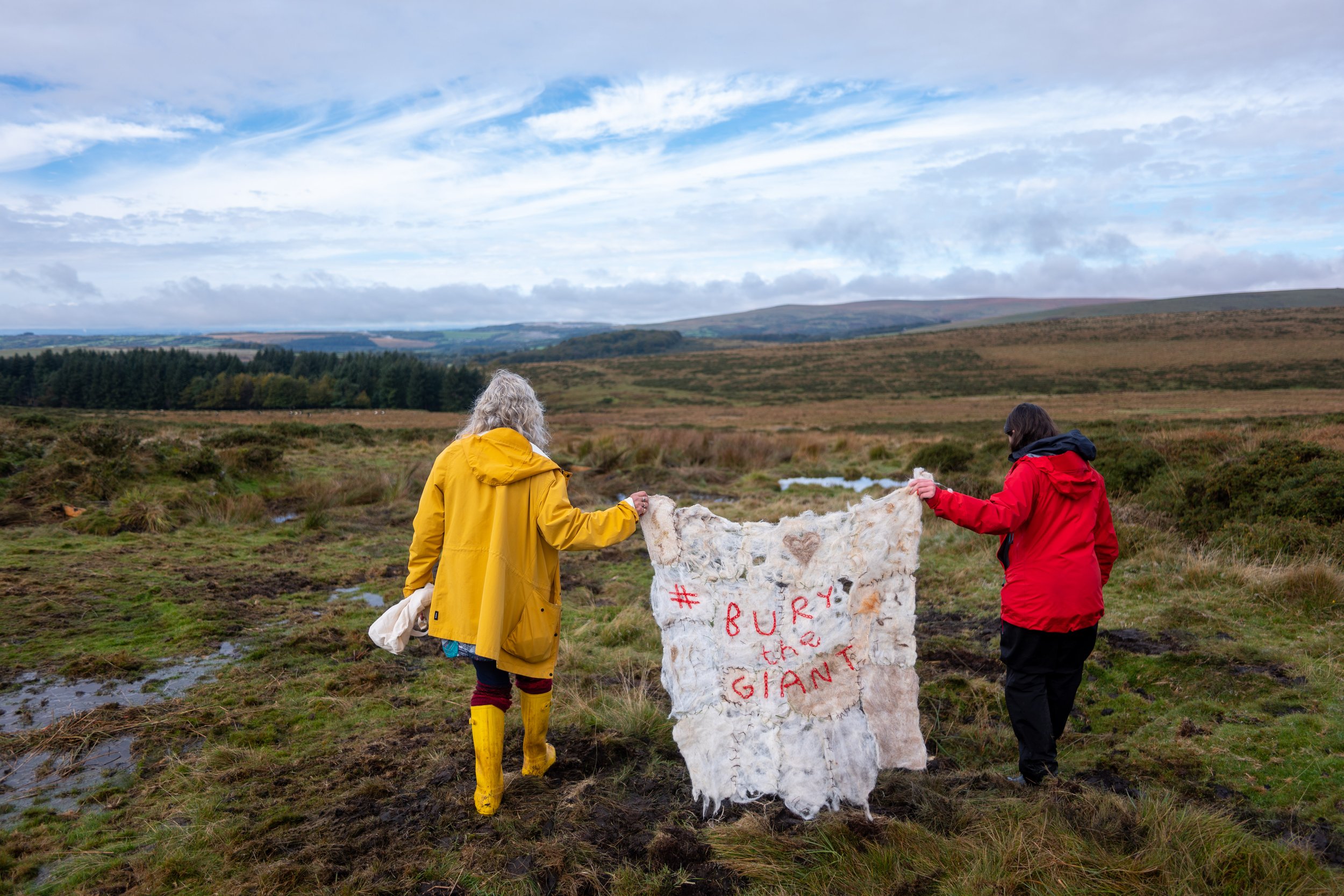

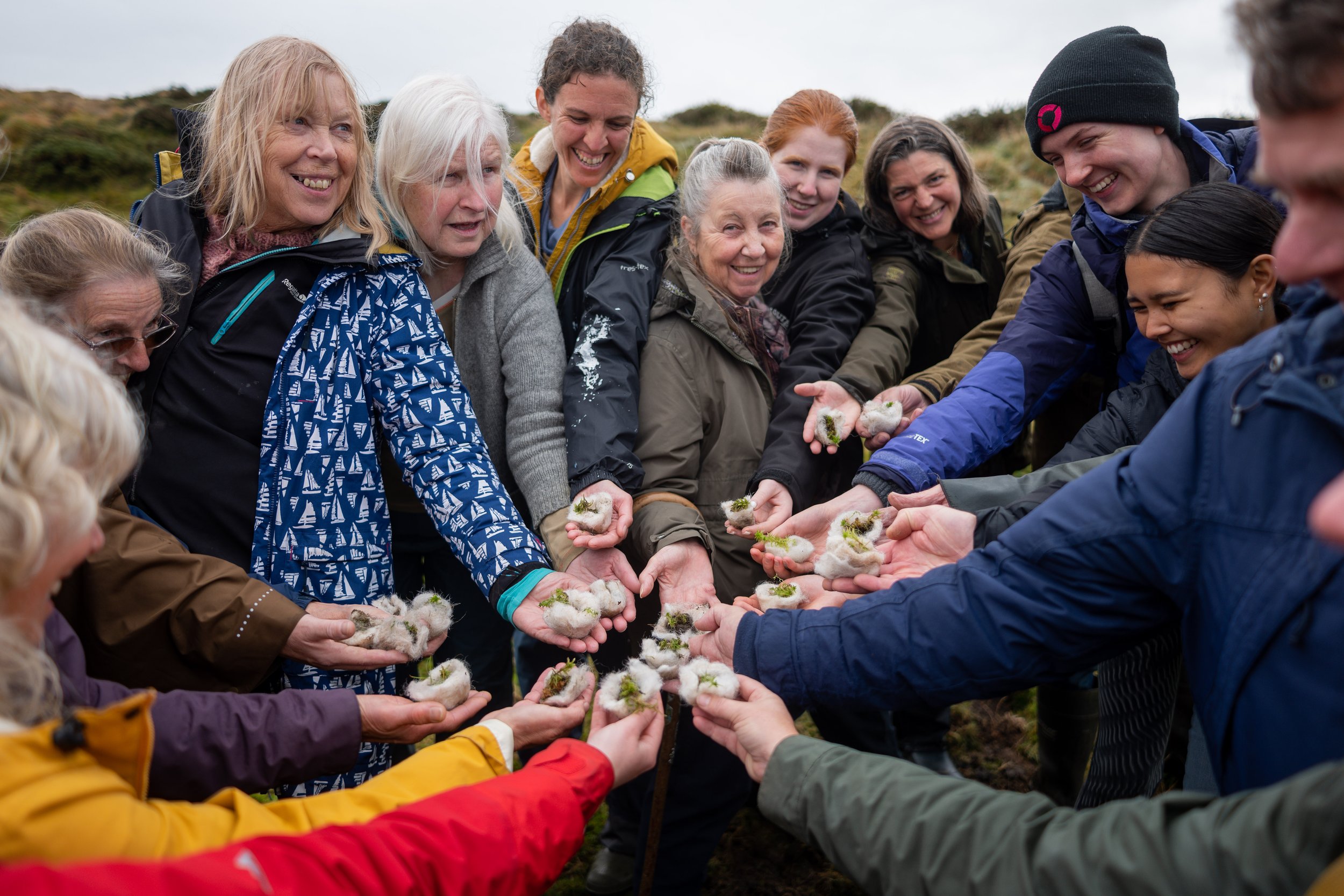

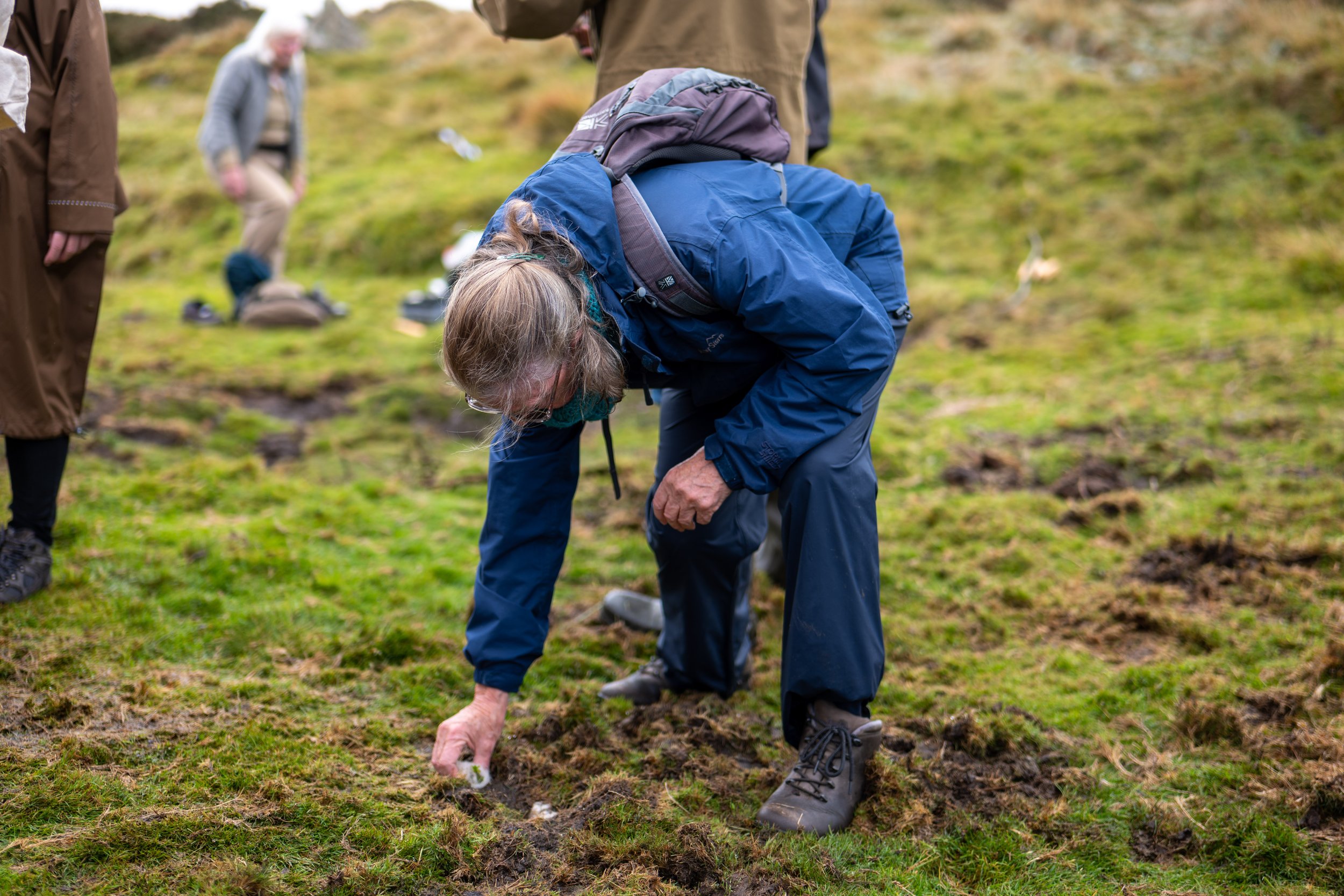
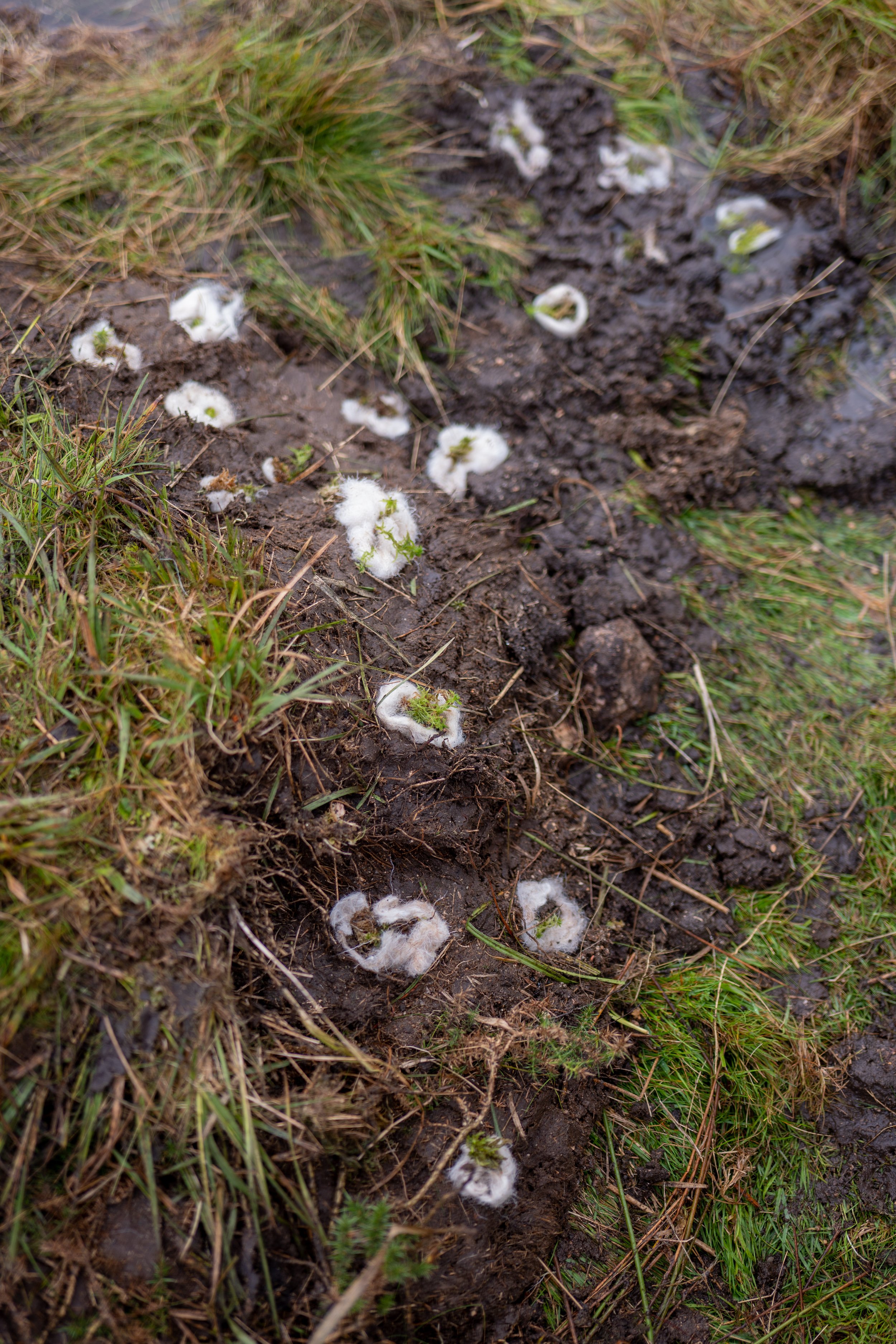

Afterwards, in the shelter of the church we carried on our chatter over cake and tea. It felt like a party and I asked everyone for their thoughts about our time together on the moor. What did we enjoy most?
“Planting in the moss
Learning about agriculture
Finding out about the restoration
Seeing other people interested in sustainability
Exploring the moor in company of people who really know it
Getting reaquainted with the high moor.
Trampling the giant
Seeing the animals.
Being with people trying to make a difference
Hearing different perspectives without tension or conflict
The sensory experience of holding moss, squidgy mud
Meeting people of different backgrounds for a hopeful and positive event
Hearing the excitement and passion
Feeling a new investment in the moor because I planted in it”

